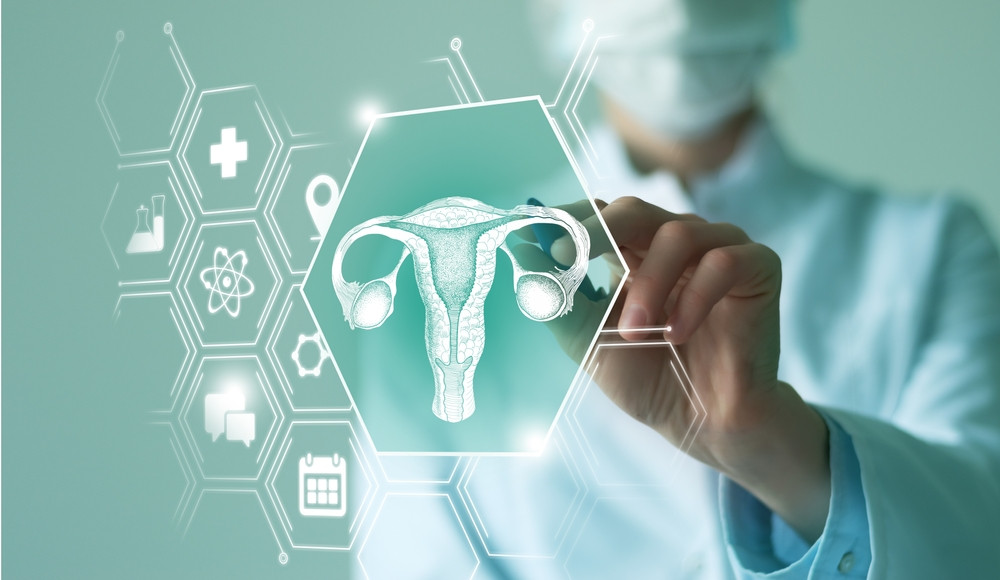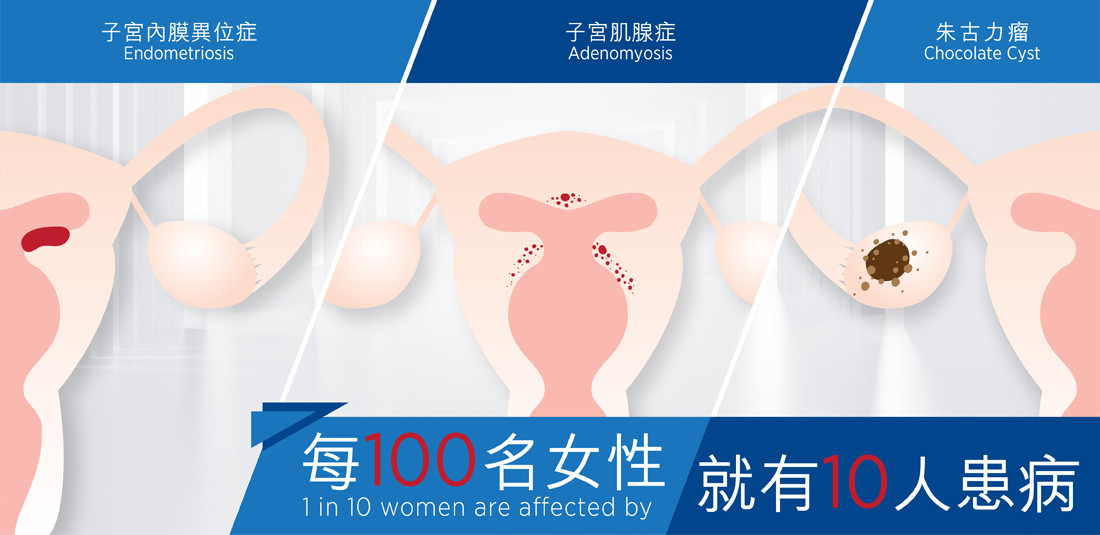Endometriosis

What is endometriosis?
Endometriosis is a common gynaecological disorder that affects approximately 10 out of 100 women. During puberty, hormonal influences in women lead to the periodic release of eggs. The endometrium, the inner lining of the uterus, thickens and becomes engorged with blood in preparation for potential fertilization. If fertilization does not occur, the endometrium breaks down and sheds, resulting in menstruation. Menstrual blood, which contains the shed endometrial tissue, is expelled from the uterus through the vagina. However, in cases of endometriosis, the endometrial tissue flows backwards through the fallopian tubes into the pelvic cavity. It then implants and proliferates outside the uterus, leading to the development of endometriosis. This abnormal growth of endometrial tissue can cause pain, inflammation, and the formation of adhesions or scar tissue. Endometriosis can affect various pelvic organs, such as the ovaries, fallopian tubes, and the lining of the pelvic cavity, and it may result in symptoms such as chronic pelvic pain, painful periods, and fertility issues.

The most common sites where endometriosis occurs are the ovaries, fallopian tubes, and pelvic cavity. When endometrial tissue is found on the ovaries, it can lead to the formation of cysts known as "chocolate cysts" due to the presence of brownish fluid inside. If a cyst ruptures, the brownish fluid can flow into the body cavity, causing severe pain and organ adhesions. When endometrial tissue is present in the muscular layer of the uterus, it is called adenomyosis. Endometriosis can also affect other organs, such as the intestines, stomach, or lungs.
Who is at high risk for endometriosis?
- Individuals who have never been pregnant.
- Those who experience an early onset of menstruation.
- Individuals with short menstrual cycles (less than 27 days).
- Those with longer duration of menstruation (more than 7 days).
- Individuals with a family history of endometriosis.
What are the symptoms of endometriosis?
The symptoms of endometriosis can vary from person to person. Some individuals experience severe pain, while others may have no symptoms at all. Common symptoms include:
- Menstrual pain (dysmenorrhea)
- Heavy menstrual bleeding
- Pain during sexual intercourse (dyspareunia)
- Pelvic pain
- Fatigue
- Difficulty with urination or bowel movements
- Diarrhea
- Infertility
Some individuals may find that their symptoms improve during pregnancy or after menopause.
How is endometriosis diagnosed?
To diagnose endometriosis, the doctor will gather information about your menstrual history, symptoms, fertility records, and family medical history. Based on this information, the doctor may employ the following diagnostic methods:
Pelvic examination
-
The doctor manually checks for abnormalities like cysts on the uterus or ovaries. However, this test may not detect mild cases or subtle cysts associated with endometriosis.
Ultrasound
-
It helps identify cysts, such as chocolate cysts on the ovaries or adenomyosis in the uterus. However, it may not diagnose mild cases or endometriosis outside the ovaries and uterus.
Read more: Common questions about pelvic ultrasound examination
Laparoscopy
-
This is the most accurate method. It involves a minimally invasive procedure using a laparoscope to visualize and diagnose endometriosis. If found, endometrial implants can be removed for further examination. This procedure is performed under general anaesthesia in a hospital setting.
Treatment for endometriosis
Medical treatment
-
Pain management
-
Hormonal therapy
-
Combined oral contraceptives: These contain progestin and estrogen, which inhibit ovulation, reduce ovarian estrogen secretion, shorten the menstrual cycle, decrease menstrual flow, and alleviate menstrual pain.
-
Progesterone medications: Examples like Dienogest and Norethisterone inhibit the growth of endometrial cells and reduce excessive endometrial proliferation.
-
Androgens: Medications in this category effectively reduce the production and secretion of ovarian estrogen. Commonly used medications include Danazol and Gestrinone.
-
Gonadotropin-releasing hormone (GnRH) agonists and antagonists: These medications, administered through injections, can effectively lower estrogen levels and inhibit the growth of endometrial tissue, leading to the atrophy of endometrial cells. Since these medications can induce a temporary menopause-like state, patients may also take low-dose estrogen or progesterone to alleviate side effects such as hot flashes, vaginal dryness, and bone loss. When the medication is discontinued, menstrual cycles and fertility will return to normal.
Commonly used medications include nonsteroidal anti-inflammatory drugs (NSAIDs) such as Ibuprofen and Paracetamol to help alleviate menstrual pain.
Hormonal therapy is used to reduce estrogen secretion, suppress ovulation, and improve symptoms such as menstrual pain and excessive bleeding. However, it cannot completely cure endometriosis and only slows down the growth of endometrial cells. Common hormonal therapy medications include:
Surgical treatment
Endometriosis is a chronic, non-cancerous condition that typically improves with menopause but can increase the risk of infertility in young women. According to data from the American College of Obstetricians and Gynecologists, approximately 40% of women with infertility have endometriosis. If you experience the following conditions, it is advisable to consider surgical treatment:
-
Severe menstrual pain that significantly impacts your daily life.
-
Inadequate symptom control with pain medication and hormonal therapy.
-
Inability to conceive despite engaging in regular sexual activity for 12 consecutive months without using any contraception.
Laparoscopic Minimally Invasive Surgery
-
This surgery is performed under general anaesthesia with the goal of removing endometrial tissue while preserving fertility. The surgeon will make a small incision in the patient's abdomen and insert a laparoscope, a thin tube with a camera and surgical instruments to visualize and remove the endometrial tissue. The aim is to preserve the function of the ovaries and fallopian tubes.
Abdominal Surgery
-
In cases where patients have large cysts, severe adhesions, or endometriosis located near the intestines or urinary tract, laparoscopic surgery may not be suitable. In such cases, traditional abdominal surgery may be performed instead.
Hysterectomy
-
Hysterectomy, the surgical removal of the uterus, can be performed using minimally invasive techniques through an abdominal incision or a vaginal approach. It is typically recommended for women with severe conditions who do not wish to preserve fertility. Depending on the individual case, the surgeon may also remove the cervix, ovaries, and fallopian tubes.
Our Team
Virtus Obstetrics and Gynaecology specialists
-
Specialty Services - Obstetrics and Gynaecology